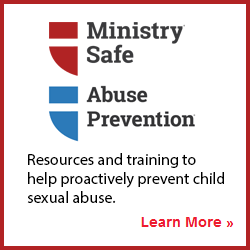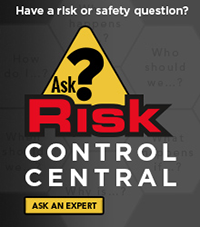Sexual Abuse Prevention

The risk of sexual abuse is real
Many children wait to report or never report child sexual abuse. Therefore, the numbers shown below likely underestimate the true impact of the problem. Although estimates vary across studies, the research shows:
- About 1 in 4 girls and 1 in 20 boys in the United States experience child sexual abuse.
- People known and trusted by the child or child’s family members perpetuate 91% of child sexual abuse.
- In 2015, the total lifetime economic burden of child sexual abuse in the United States was estimated to be at least $9.3 billion.1
- The average age for disclosing this type of abuse is about 52 years old.
- 86% of child sexual abuse goes unreported altogether.1
Organizations likely make use of background checks to help ensure their employees and volunteers are fit to serve children and youth. And while background checks are helpful, it is recommended they not serve as the sole means of applicant screening.

Prioritizing child safety
The prioritization of child safety and well-being are paramount in preventing child sexual abuse. Implementing robust screening processes for staff and volunteers, providing regular training on recognizing and reporting signs of abuse, and fostering a culture of open communication are crucial steps in safeguarding children. Proactive measures protect vulnerable youth and promote trust and accountability within organizations, ultimately ensuring a nurturing and secure environment for all participants.
- 10 Essentials of Sexual Abuse Prevention
- Know the Grooming Process
- Protect Children from Sexual Abuse: Know What to Watch For
- Understanding and Training for Peer-to-Peer Abuse Prevention

While awareness and knowledge of the risk of sexual abuse are good places to start, Church Mutual wants you and your organization to have a solid system in place that provides layers of coverage.
The following assessment is meant to provide you with a starting point to discover strengths and weaknesses related to the risk of sexual abuse and establish how effective, well-thought-out prevention can keep your people safe:
Every state in the United States has laws requiring adults to report suspected or alleged abuse, neglect or maltreatment of a child to the appropriate child protective agencies. Do you know the laws that apply in your state? The following information will help you determine when and to whom a report should be made.
- Reporting Child Abuse or Neglect – Abuse Prevention Systems®
- 50-State Comparison of Mandatory Reporting Laws – Child Protection Ombudsman of Colorado
What can you do to establish an all-encompassing safety system? We’re glad you asked!
- Establish effective policies and procedures (click here) »
Policies and procedures serve as a deterrent. They demonstrate a recognition and awareness of the risk, which makes your organization a less attractive target for those with bad intentions. Having effective policies and procedures in place also shows there are levels of accountability and enforcement within your organization. Showing new hire candidates or potential volunteers your organization's policies and procedures reinforces your recognition and awareness of the risk, as well as the level of accountability and consequences.
You may be wondering what the difference is between effective and inadequate policies and procedures. Some helpful questions to ask include:
- Is everyone – including leadership, staff and volunteers – aware the policies and procedures exist?
- Do the policies and procedures fit your organization's needs and are they consistently followed?
- Are your policies and procedures extensive or restrictive to the point that many simply disregard them?
By answering these questions, you can determine whether you need to revisit your existing policies and procedures. However, it's also important to keep in mind that policies and procedures are not surefire solutions. Ultimately, a comprehensive system is needed to help reduce the risk.
- Conduct background checks and implement screening processes (click here) »
In today's society, background checking prospective employees and volunteers has become a legal standard of care. It's important to tailor your background checks to specific positions, especially those working with children in a less structured or less easily supervised environment. You should also run background checks on an annual basis for all employees and volunteers to identify potential risks. To learn more, check out the following articles:
At the same time, Church Mutual recognizes that background checks are not a standalone solution. You need to implement a screening process that helps your organization differentiate between risky applicants and those who are qualified to serve. While background checks catch the obvious, a screening process provides your organization with the knowledge and ability to recognize high-risk responses on applications, reference forms and during an interview.
- Administer training and reinforce protective measures (click here) »
You have a responsibility to provide a standard of care to children and youth put in your trust. Awareness training is an essential element in proving a standard of care and reducing the risk of sexual abuse. Everyone serving children in your organization should participate in and complete awareness training every year. Your training program should include elements that develop individuals' skills in identifying predatory behaviors such as grooming of victims and gatekeepers.
It's also necessary to monitor training progress. Recognizing those who have completed the training, and appropriate follow-up with those who have not, proves that your organization is taking steps to provide a reasonable standard of care. This helps reinforce your organization's stance regarding the seriousness of the issue and the protective measures you have in place to reduce the risk.
Solutions to help you reduce the risk
We have teamed up with MinistrySafe®|Abuse Prevention Systems®, Trusted Employees and Expert Online Training (EOT) to help our customers address the risk of sexual abuse. These partners offer Church Mutual policyholders discounted pricing on tools, resources, trainings and more.
Not a Church Mutual policyholder? Find out how you can become a customer today.
Additional resources
- FREE online child abuse prevention workshop – MinistrySafe|Abuse Prevention Systems
- Should your church accommodate known sex offenders? – Church Executive
- Child abuse and neglect resources – Centers for Disease Control and Prevention (CDC)










